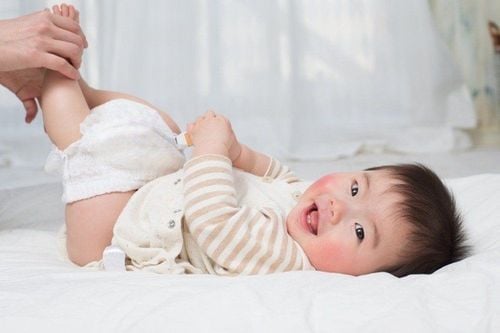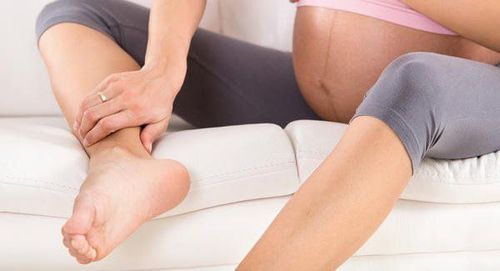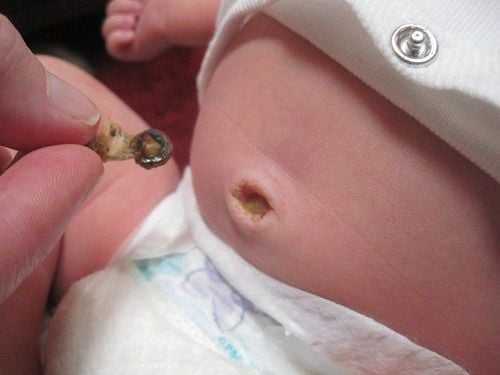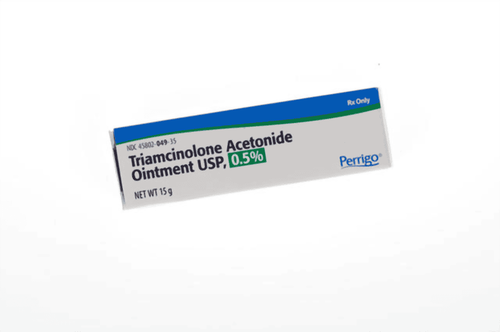This is an automatically translated article.
The article was professionally consulted by Specialist Doctor II Cao Thi Thanh - Pediatrician - Department of Pediatrics - Neonatology - Vinmec Hai Phong International General Hospital. Dr. Thanh has worked for 25 years in the treatment of neonatal pediatric diseases.1. Seborrheic Dermatitis
Seborrheic dermatitis in the scalp area, popularly known as buffalo dung plaque, although the lesions caused by seborrheic dermatitis look unsightly, they are not harmful to the health of the child. Seborrheic dermatitis is quite common in infants aged 0 to 1 year. Children often have patches of dry, flaky skin that resemble dandruff, or in more severe cases may see large, thick, yellowish shiny patches.Seborrheic dermatitis can appear any time from two weeks to three months postpartum and usually clears up on its own many months later without treatment. After 6 to 7 months of age, this disease will no longer be a serious problem for the baby. Seborrheic dermatitis occurs when the oil-producing glands under the skin are overactive, producing too much sebum. They then dry out, form large patches, and fall off. Many experts believe that an excess of hormones produced by the mother and passed to the baby from the fetal stage causes the sebaceous glands to work earlier. When the hormone levels inside the baby's body decrease after the first months of life, this condition will gradually disappear.
The best way to clean the scalp is to bathe your baby daily with mild shampoos. Try to massage the baby's head with your fingers or a soft cloth to get the patches of scalp flake off. Before rinsing the soap off with water, brush your child's hair with a soft amount to help remove dry patches from sticking to the hair.

In fact, seborrheic dermatitis can go away on its own without treatment, but parents should not be subjective to avoid adversely affecting the health of the child. When the scalp patches spread or get worse, parents should take the child to the doctor for examination and treatment. In this case, the doctor may prescribe specific shampoos or cortisone creams.
2. Baby nail care
Baby nails are usually softer and more pliable than adult nails. However, young children's nails are really sharp, so babies often scratch their faces or their caregivers when they do not have good control of hand and foot movements.Newborns' nails grow very quickly and they need to be trimmed often, maybe several times a week. Meanwhile, toenails usually don't need too much care.
Some parents have a habit of using their mouth to cut their nails short, however AAP does not recommend this method for child nail care because of the high risk of infection. The most effective method is to use small scissors or a nail clipper. When cutting a baby's fingernails short, it is advisable to have an extra person hold and hold the baby so that the baby does not wiggle too much like when feeding or lulling.
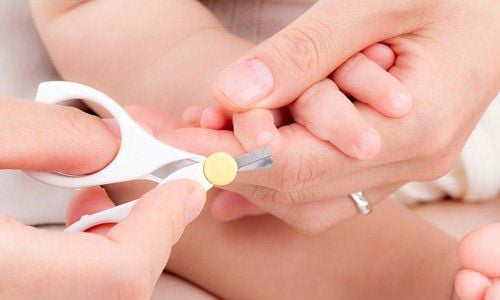
3. Clean the baby's navel
After birth, the baby's umbilical cord will be clamped and cut close to the base of the umbilical cord, causing the umbilical cord stump to wilt and fall off to form the umbilical cord.Cleaning the umbilical cord for the baby in the first days after birth need to make sure the umbilical cord stump is dry and clean. The excess cord will dry out and fall off on average after 10 to 21 days. They will then leave a small wound on the abdomen and take a few days to fully heal. When the umbilical cord falls off, some bleeding can be observed. This is completely normal, parents should not be too worried.
When wearing a diaper, the top edge should be folded down to the belly so that the umbilical foot does not come into contact with the baby's waste products including urine and feces. Similarly, limit exposure to water until the belly button falls off completely. These measures play a role in preventing umbilical cord infections in infants.
In warm weather, babies should only be worn in diapers and light blazers, which allow air to circulate and aid in the drying of the umbilical cord. Avoid letting your child wear body-hugging clothes like a bodysuit until the belly button falls off completely.

4. Circumcision in boys
All you need to do to get circumcised is to keep the foreskin area clean with soap and water every time you bathe your baby. For circumcised or uncircumcised boys, it is not advisable to bathe in tubs with too much soap, as these can irritate and dry out the skin of the penis.During the first days after circumcision, the penis may be slightly swollen and yellow tissue may be observed. This is a sign that the penis is healing well.
The circumcised area is rarely infected. Signs of an infection include persistent redness, edema of the tip of the penis, and a yellowish discharge wound at the end of the penis. When detecting one of these signs, parents should take their child to see a doctor immediately.
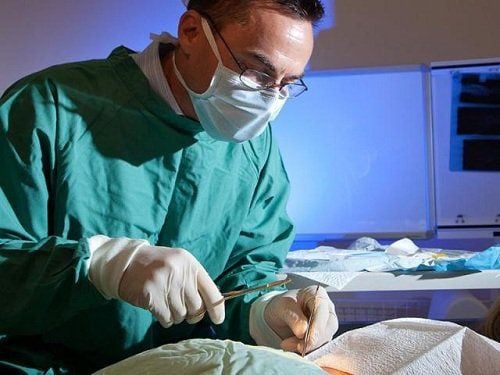
5. Caring for uncircumcised babies
When cleaning or bathing an uncircumcised baby boy, parents should not try to pull the foreskin or clean underneath. The thing to do is to clean the outside of the penis, just like you would take care of other skin on the body.Depending on the child, it may take weeks, months or even years for the foreskin to separate from the penis and become more elastic.
6. Vaginal care for girls
Every girl's vaginal area should be cleaned with a soft, clean, damp cloth while wearing diapers and in the shower. When cleaning, pay attention to wiping from front to back to avoid spreading bacteria from the anus to the baby's vagina. Be sure to clean gently and thoroughly both in the skin folds and on the sides of the groin area.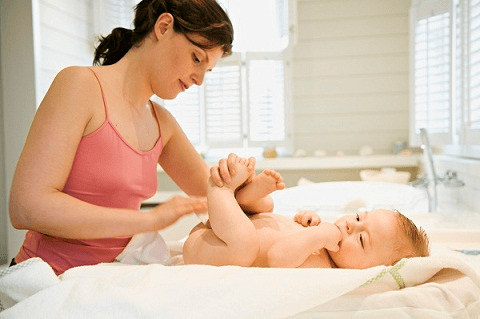
7. Skin care in the external genitalia
Regardless of whether it's a boy or a girl, if the organ is swollen and red, you can see it right away. Girls may have some clear white or bloody discharge. All of these are normal during the first few weeks of life because the baby receives some hormones from the mother during pregnancy. If these symptoms do not go away after 6 weeks of age, parents need to take the baby to see a doctor for monitoring and treatment.Taking care of a newborn's body is not easy, especially for first-time parents. Children can easily get diseases when their bodies are weak and their immune systems are not as mature as adults. Therefore, when seeing children with abnormal signs, parents need to go to medical centers for examination and treatment.
As a key area of Vinmec Health system, Pediatrics Department always brings satisfaction to customers and is highly appreciated by industry experts with:
Gathering a team of top doctors and nurses in Pediatrics : consists of leading experts with high professional qualifications (professors, associate professors, doctorates, masters), experienced, worked at major hospitals such as Bach Mai, 108.. Doctors All doctors are well-trained, professional, conscientious, knowledgeable about young psychology. In addition to domestic pediatric specialists, the Department of Pediatrics also has the participation of foreign experts (Japan, Singapore, Australia, USA) who are always pioneers in applying the latest and most effective treatment regimens. . Comprehensive services: In the field of Pediatrics, Vinmec provides a series of continuous medical examination and treatment services from Newborn to Pediatric and Vaccine,... according to international standards to help parents take care of their baby's health from birth to childhood. from birth to adulthood Specialized techniques: Vinmec has successfully deployed many specialized techniques to make the treatment of difficult diseases in Pediatrics more effective: neurosurgery - skull surgery, stem cell transplantation. blood in cancer treatment. Professional care: In addition to understanding children's psychology, Vinmec also pays special attention to the children's play space, helping them to have fun and get used to the hospital's environment, cooperate in treatment, improve the efficiency of medical treatment.
Please dial HOTLINE for more information or register for an appointment HERE. Download MyVinmec app to make appointments faster and to manage your bookings easily.
Reference source: babycenter.com





